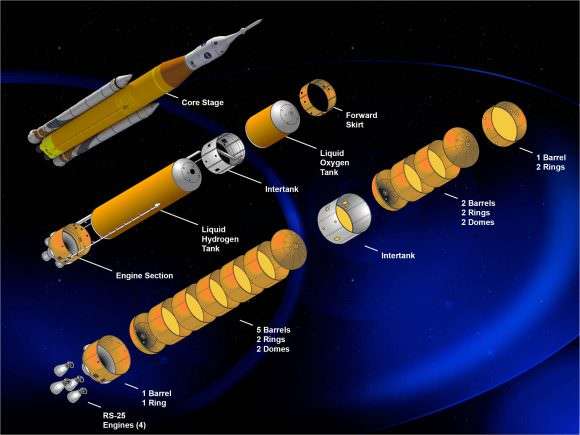By Richard Weitz
The United States cannot remain a great power without a leading space presence. Countries understand that achievements in space boost their sovereignty, status, and power.
They also drive economic and technological advancement by generating novel technologies, especially for computers, propulsion, energy, and electronics.
Alarmingly, U.S. space competitiveness is declining.
From the start of the space age until recentlythe United States enjoyed was the preeminent space power. Yet, this status has significantly erodedand threatens to worsen further.
As Brian Morra recently noted, “there are critically important areas where the US and its allies no longer enjoy military preeminence in space at a time when the global economy and its citizenry are ever more dependent upon space assets for the financial system, communications, internet access, navigation, weather, climate monitoring, natural resources, and more.”
The end of Space Shuttle program in 2011 both marked and accelerated this decline. This demise of the Shuttle without a replacement system left the National Aeronautics and Space Administration (NASA), a semi-independent U.S. government agency that oversees the U.S. civilian space program and related research, without a launch vehicle suitable for sending astronauts or large cargo into space.
Despite having pioneered space travel and paid for most of the International Space Station, the end of the shuttle program has compelled the United States to purchase high-priced seats on the Russian Soyuz to send U.S. astronauts into orbit. Moscow has been exploiting its position to charge monopoly prices.
NASA has also had to purchase Russian rocket engines to launch large unmanned missions.
Unlike the United States, Russia has retained the capacity to send large platforms into space. China has also made significant strides in its space program; becoming the third country, after Russia and the United States, to launch people into space.
The Chinese government has been devoting enormous resources to launching more satellites annually than any other country and developing its own heavy carrier rocket.
Recent years have seen a worrisome increase in Sino-Russian collaboration regarding space exploration, rocket engines, and launch vehicles. Russia appears prepared to end its partnership with the U.S.-led International Space Station and instead collaborate with China’s independent space building program.
Russia and especially China have been leveraging their advanced space launch capacity to make diplomatic gains.
China now makes and launches satellites for several countries, enabling Beijing to gain market share as well as build international relationships with partner countries.
Moreover, due to deteriorating relations with both countries, U.S. leaders have justifiably become wary of relying on cooperating with Russia or China for critical space missions.
However, Washington needs to provide adequate resourced to achieve greater space freedom.
The Russian and Chinese space programs benefit from clearly defined goals, ample and stable government funding, and popular enthusiasm.
The U.S. program needs more of these qualities.
Hoping that erratic billionaires like Elon Muskwill solve this problem is too risky. Besides emotional meltdowns, fickle entrepreneurs can easily end their support for these costly public projects.
Profits often trump patriotism.
Even established public companies can desert national security missions.
For example, employee objections recently led Google to announce that it would not bid to renew its Project Maven UAV contract with the Pentagon after it expires next year.
Fortunately, a solution is at hand.
The new U.S.-government controlled Space Launch System (SLS) will soon be able to send astronauts to other planets and carry enormous loads into space.
Restoring U.S. leadership to space exploration will yield critical commercial and diplomatic benefits. It would also help bring us back to the adventurous values of the “age of exploration and enlightenment”and overcome the pervasive caution in our “risk-averse society.”
The SLS will be superior to any space carrier ever deployed. It would use proven components from earlier launch vehicles, such as the Apollo and Shuttle missions, but is designed to be evolutionary. NASA can increase its capabilities over time through upgrades and modular replacements without needing costly overhauls of the core launch vehicle.
Hundreds of U.S. companies will help build and maintain the System. Breaking with our current reliance with potentially hostile countries, foreign support for the SLS would be welcome but optional.
Besides civilian purposes, the SLS, can help overcome growing Russian and Chinese threats to U.S. access to space.
The Department of Defense has repeatedly warned that Moscow and Beijing are developing weapons to shoot down U.S. satellites. The Pentagon cannot fight a major war without the secure communications, early warning, precision targeting, global navigation, and other capabilities its limited suite of satellites provide.
Instead of the current practice of sending one vulnerable advanced satellite into space at a time, the enormous payload of the SLS would allow the United States to replace an entire constellation of downed or disabled satellites as well as build an entirely new space satellite network in a crisis.
The United States could also launch better shielded but heavier armored satellites
The United States needs space for critical military, intelligence, economic, and other purposes.
It cannot depend on foreign countries or private entrepreneurs for space access.
The featured graphic shows all the dome, barrel, ring and engine components used to assemble the five major structures of the core stage of NASA’s Space Launch System (SLS) in Block 1 configuration.
Credit: NASA/MSFC
Read more at: https://phys.org/news/2017-07-space-systemthe-powerful-rocket-built.html#jCp


